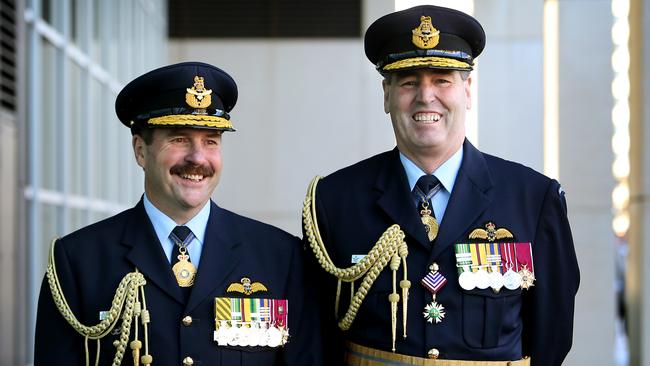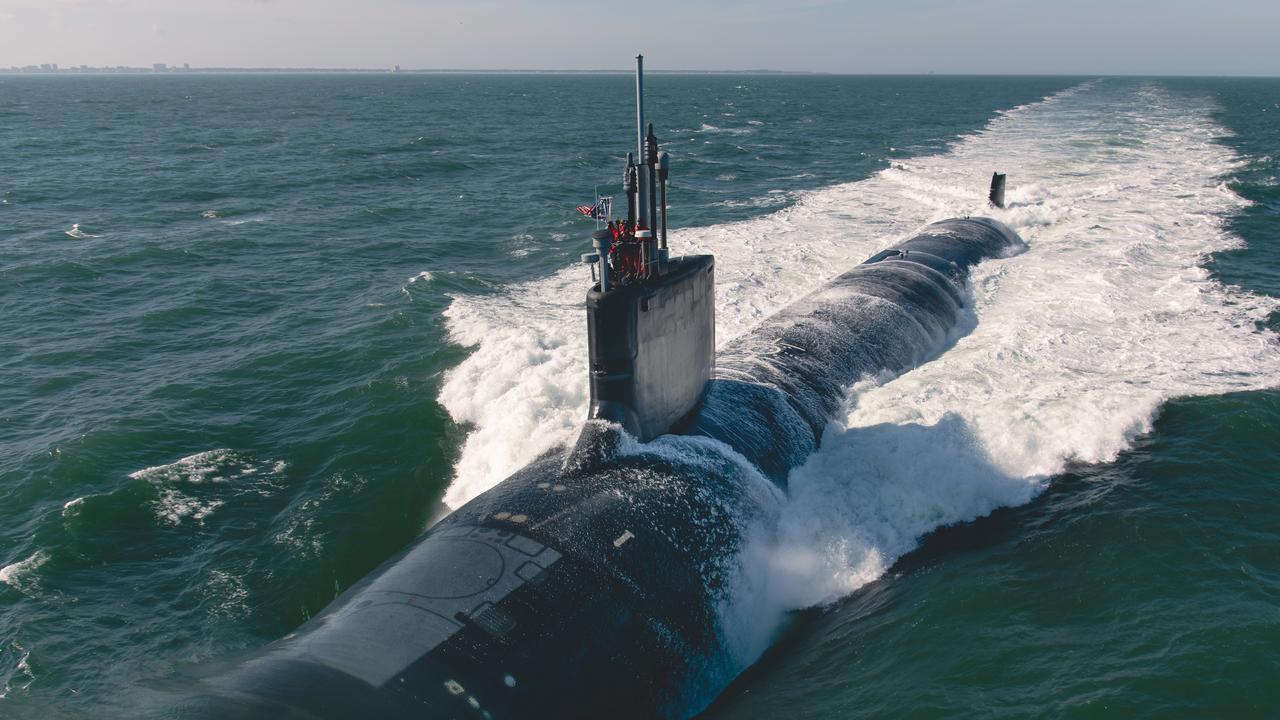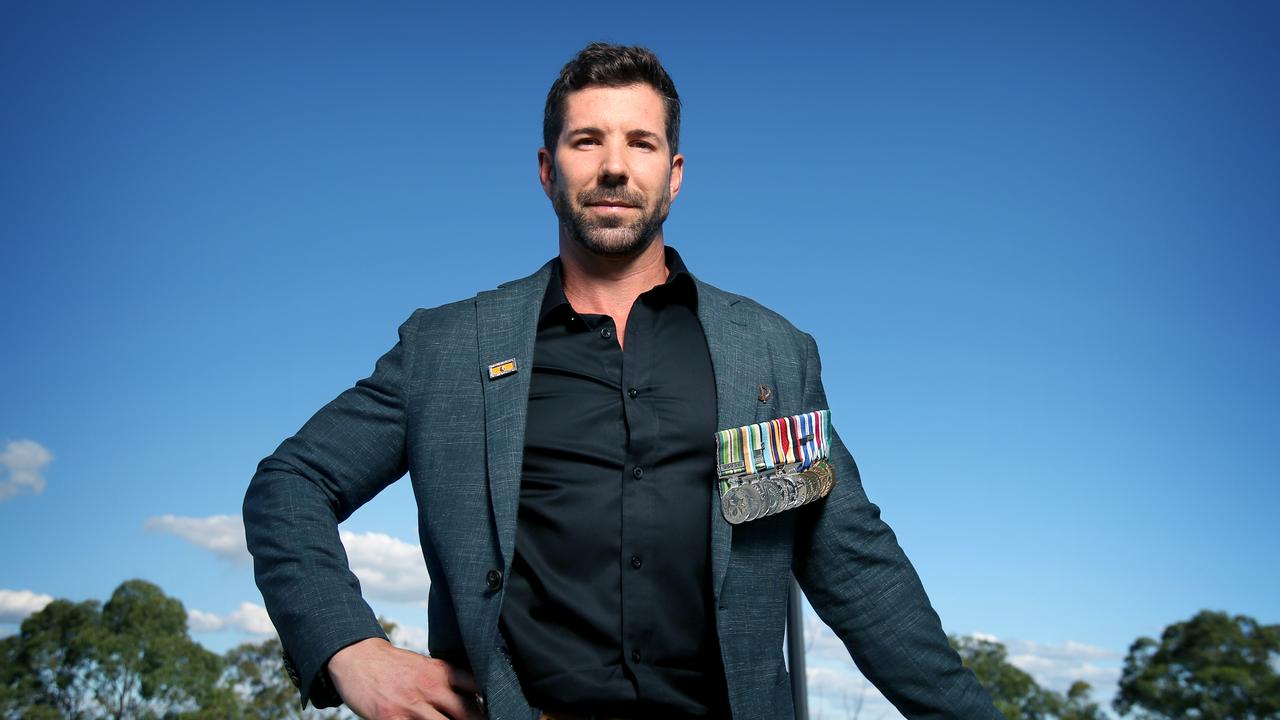Give RAAF more strike force, say defence chiefs
Australia must urgently review its air and maritime strike capabilities in order to meet the China threat, warn former air force chiefs.

Australia must urgently review its air and maritime strike capabilities in order to meet the threat posed by a rising China and a possible retreat by the US from our region, two former air force chiefs have warned.
Retired Air Marshal Leo Davies and his predecessor Air Marshal Geoff Brown have warned that two decades of insurgency-style conflict in the Middle East have left the Australian Defence Force poorly equipped to meet the new era of great-power conflict between the US and China.
READ MORE: Call halt to loss of life and treasure, writes Catherine McGregor
The former chiefs have added their voices to growing disquiet within the strategic defence community over Australia’s capability. Both say Australia may need to invest in a strategic bomber and drones to enhance the air force’s range and impact, along with land-based ballistic missiles.
Air Marshal Davies, who was chief of the Royal Australian Air Force for four years up to July, has called for a “reset” of Australia’s defence posture. He has argued that our existing naval and air assets may not be able to defend the country’s sea lines of communication — the primary maritime routes used by military and trade vessels — or fight a hostile foreign power.
“The force that we used to carry out nation-building in the Middle East cannot defend our sea lines of communication or prevent the lodgment of hostile power in the Indo-Pacific region,’’ Air Marshal Davies told The Australian. “But without a reset we will keep developing it against an outdated set of strategic circumstances.”
Air Marshal Brown, who led the RAAF from 2011 to 2015, called for a major increase in air power, saying that, as the strategic outlook changed, the air force, not the army, was likely to be the service of “first resort’’.
“As an advanced technological nation about to get deeply into space we should be playing to our strengths,’’ he told The Australian. “Investment in air crew and technology is actually incredibly efficient for a small nation with an educated population.”
The former air chiefs’ rare contributions to the debate come at a time of strategic upheaval, with the increasingly assertive role played by China forcing defence planners to rethink the country’s force posture.
Australia has committed to buying 72 F-35 Joint Strike Fighters to replace its fleet of Super Hornets and 12 Attack-class submarines to replace the Hawke-era Collins-class boats. But with the subs’ delivery date decades away and cheap, but increasingly sophisticated and potent drones threatening to dull the technical edge offered by F-35s, some analysts worry Australia’s strike capability could be eroded.
Air Marshal Davies said the strategic environment had changed enormously since the 1999 East Timor intervention, which saw the ADF focus on building up the land forces. Both Air Marshals Brown and Davies were instrumental in the changes to the force structure of the ADF following the strategic shock of the Timor crisis. Neither regrets his role in those decisions.
“They were correct decisions based on the best information we possessed at the time,” Air Marshal Davies said. “Everyone thought conventional wars were almost a thing of the past. That judgment now looks rather optimistic. We need to ensure that our air, space and naval assets can impose transaction costs on those who would infringe on our vital trading interests. That must entail investment in air power.”
Twenty years after the first Australian boots hit the ground in Timor, both former RAAF chiefs believe the emphasis on land forces has gone too far, resulting in a major gap in Australia’s defence capability. “Both the region and the global situation have changed much more rapidly and adversely than we ever foresaw at that time,’’ Air Marshal Davies said. “We now need to have a serious examination of where we are heading. Conventional threats are now more relevant than counter-insurgency.”
In the years after Timor, the ADF deployed repeatedly to Iraq and Afghanistan, missions that taxed the army and, according to some, distracted defence planners from the gathering threat in our region.
After a period of relative stability, the Indo-Pacific region is now the focal point for rivalry between China and the US. The extended “Pax Americana” that has underpinned Australia’s unimpeded access to the global commons, especially the sea lanes throughout Asia, is facing an unprecedented challenge.
Air Marshal Davies emphasised the innately joint nature of the investments required.
“We must be proficient in integrated multi-domain operations,” Air Marshal Davies said. “That means across the traditional physical domains of land, sea and air, but cyber and space as well.
“The environment is fluid and we need to urgently review where we stand. Not just in the air but in the joint domains.”
Catherine McGregor is a former RAAF and army officer and works as an adviser to the Australian Strategic Policy Institute.



